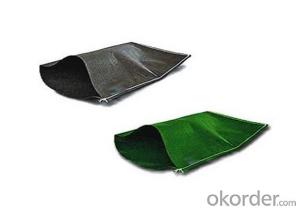The civil engineering and construction industry knows the term ‘geomembrane roll’ when it comes to creating water proof barriers and containment systems. However, what is a geomembrane roll and why is it so important in today’s construction projects?
Essentially, a geomembrane roll is a very large sheet of geomembrane that has been rolled up to facilitate easy transport and deployment at building sites. Various materials are used for these rolls such as thermoplastic olefin (TPO), polyvinyl chloride (PVC) or high-density polyethylene (HDPE) each having its own unique properties and benefits. Geomembranelolls offer great flexibility since they can be easily cut into different shapes required on project.
The Significance of Quality
The significance of quality in relation to geomembrane rolls cannot be overstated. High-quality geomembranes guarantee durability, longevity hence prevention of leaks and breaches that may cause containment failure. Thus every roll undergoes through quality control processes during the manufacturing process.
Installation Process: A Full Explanation
Installing geomembrane rolls is time consuming since it requires careful planning plus execution. This goes a long way to making sure that the waterproofing or containment system remains intact by not allowing any wrinkles or punctures among other damages which may compromise its integrity. The procedure typically involves the following:
Unfolding the membrane cautiously without causing folds or creases.
Fixing the geomenbranewith appropriate fastening techniques such as clamps or adhesives.
Consistency should be maintained between adjacent treads when constructing continuous seamswhere sealing must also be done properly for maximum effect.
Applications: Numerous & Wide-Ranging
Geomembranes rolls find application across diverse industries including:
Waste Management: They are used in landfill liners and caps to prevent leakage of hazardous waste.
Water Management: They are employed in reservoirs, canals, and ponds to create waterproof barriers.
Agricultural Projects: They are utilized in irrigation systems and fish farming ponds for water retention.
Construction: They serve as a waterproofing layer in tunnels, basements, and other below-ground structures.
Environmental Concerns
The use of geomembrane rolls is also important considering their environmental impact. These modern geomembranes have resistance to ultraviolet light (UV), chemical degradation, temperature changes, etc. that therefore prevents their disintegration or adding to pollution during their lifetime.
Maintenance and Longevity
For instance, regular inspection will help identify issues such as wearing out, puncture or degradation before they get worse. In addition to this the use of protective layers or coatings help promote the lifespan of the geomembrane.
The Future of Geomembranes
With technological advancements comes new types of geomembrane materials being created. Through advances in manufacturing processes and material science we are now able to develop these geomembranes with increased strengths, flexibility and ability to withstand harsh environmental conditions. This indicates that geomembrane rolls will still remain an indispensable constituent within construction and engineering industries.
In summary, rolls of geomembrane are an unavoidable instrument in the building sector that caters for all waterproofing and containment needs. Their quality, installation process, applications, environmental considerations, and future developments all add to their importance. As construction materials keep advancing faster than ever before, geomembrane rolls will become increasingly important; helping to guarantee safer and environmentally friendly infrastructures for next generations.







